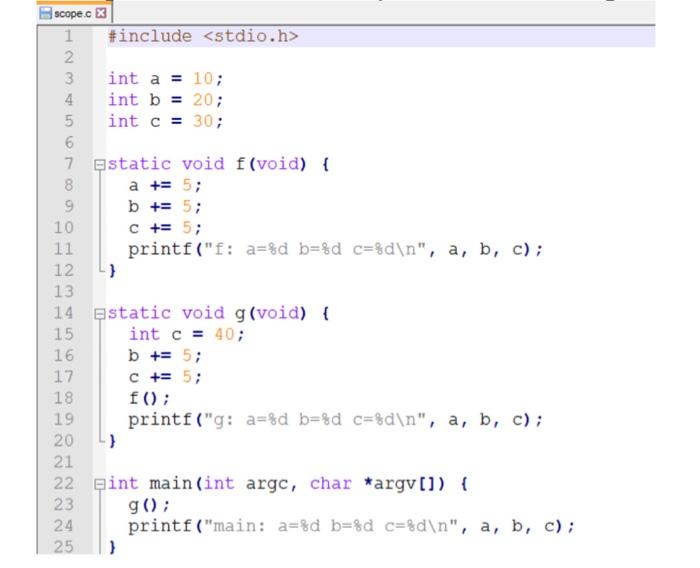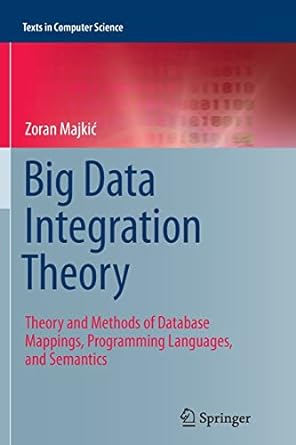Question
ans by no plz tnx I. What is the output from the (unedited) C program below? 5 points. f: a= ______ b= ______ c= ______

I. What is the output from the (unedited) C program below?5 points.
f: a=______ b=______ c=______
g: a=______ b=______ c=______
main: a=______ b=______ c=______
II. Assume that C has dynamic scope (it does not) instead of static scope. What would the output be? (Do this before doing part III, but you can change your answers after doing part III). 5 points.
f: a=______ b=______ c=______
g: a=______ b=______ c=______
main: a=______ b=______ c=______
III. Modify the C program to emulate dynamic scope. Follow these steps. 10 points.
IV. What is the output from your modified C program? It should match part II above. 10 points.
f: a=______ b=______ c=______
g: a=______ b=______ c=______
main: a=______ b=______ c=______
Submit your modified C program, as well as the outputs for parts I, II and IV. You can submit the output as a text file, you can update this word doc, you can submit a pdf, etc.
code in text
#include
int a = 10;
int b = 20;
int c = 30;
astatic void f(void) {
a += 5; b += 5;
+= 5;
printf ("f: a=8d b=8d c=8d ", a, b, c);
L)
astatic void g(void) (
int c = 40;
b += 5;
+= 5;
f();
printf("g: a=8d b=8d c=8dln", a, b, c);
aint main (int arg, char *argv []) (
g();
printE("main: a=8d b=8d c=8dln", a, b, c);

Step by Step Solution
There are 3 Steps involved in it
Step: 1

Get Instant Access to Expert-Tailored Solutions
See step-by-step solutions with expert insights and AI powered tools for academic success
Step: 2

Step: 3

Ace Your Homework with AI
Get the answers you need in no time with our AI-driven, step-by-step assistance
Get Started


